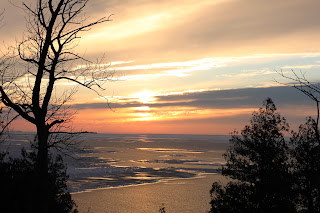Birding…with children
By Bob Dolgan
Four years ago, before children, I had all the time in the
world to go birding. But I didn’t. I played golf. I went backpacking. I biked
on the lakefront path. Then I had children, and I actually started birding
more.
I’ve birded since I was 8 years old, but it took having
children to sharpen my priorities. The limits of nap schedules and early
bedtimes ensure that. I’ve come to the conclusion that I don’t believe in
traveling vast distances to chase rarities. But I do believe in seeing special
birds when I can. I don’t believe in chasing a bird solely for a list. But I do
believe in keeping track of the birds I see and hear.
Birding is the one hobby my wife and I can easily still do
with the kids. The pace and duration are vastly different now, but the result
has been more outings than ever. Having Montrose nearby is helpful. When my
daughter was six months old, she would wake early on weekends and I would put
her in a Baby Bjorn. We could get to Montrose in less than 10 minutes. I
remember clearly the first time she noticed the presence of migrating birds. It
was a crisp fall day and American Redstarts were singing from a grove of
birches. She turned her head back and forth when she heard their songs.
None of these early trips were long, as feeding and fresh
diapers beckoned, but as we well know, you can pick up a number of species in a
short time on the lakefront. Since then, we’ve graduated to a backpack carrier,
and binoculars are now dangling from around my neck again. My older daughter, Sonja,
now 3, knows the names of several birds—red-winged blackbird, chickadee, pigeon
and crow to name a few. Sometimes the carrier becomes less appealing, and Sonja
wants to be held. Often I have stood with my daughter in one arm while holding
my binoculars up to my eye with the other, scanning treetops. Occasionally I’ve
missed a good bird because of these awkward positions, I’m sure, but simply
being in the field is worth it.
Earlier this year, in January, I took a day off and went
birding. With my second daughter due in April, I thought it might be the last
chance I’d have to bird for a while. The outcome was a little
disappointing—just 27 species—but I had some time to myself, time I wouldn’t
have anymore come April. Then the baby came, I was on leave from work and we birded
quite a bit. We recorded 12 lists in April alone.
My birding renaissance has extended into summer, too. My
wife and I took the children camping nearby (Chain O Lakes State Park), a
location that was close to a place where it was possible to see a lifer without
driving far out of the way. Growing up in Northeast Ohio, my odds of seeing a
Black Tern were slim. So we stopped off at a site on the way to the state park.
Both kids were sleeping when we pulled up to the location. Thanks to the magic
of eBird, the terns were right where they were supposed to be. I watched three
flit through the air above a marsh. We were back on the road before the kids
even woke up. Another success birding…with children.


